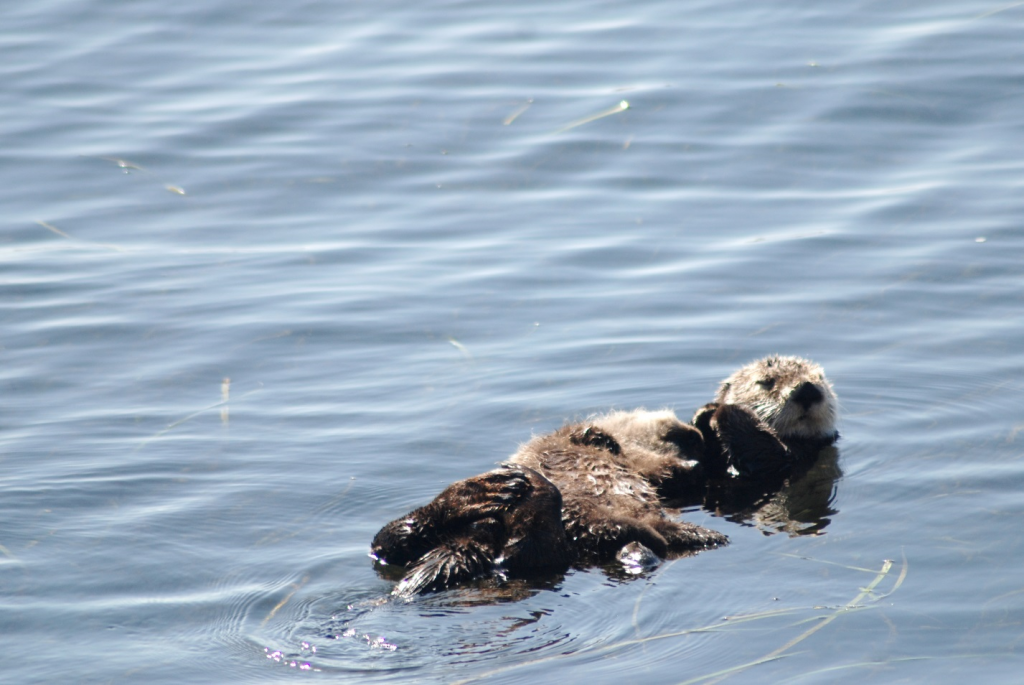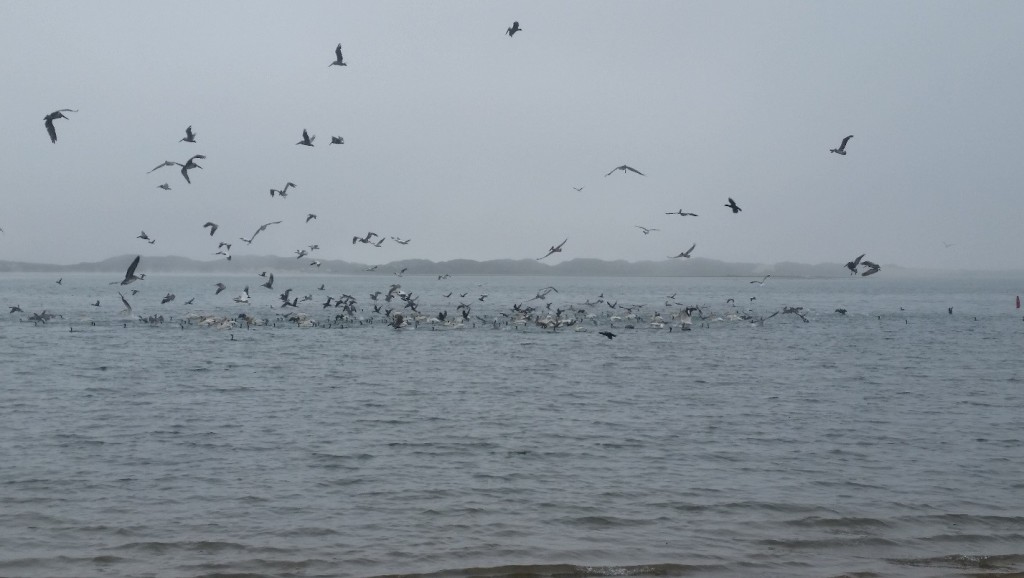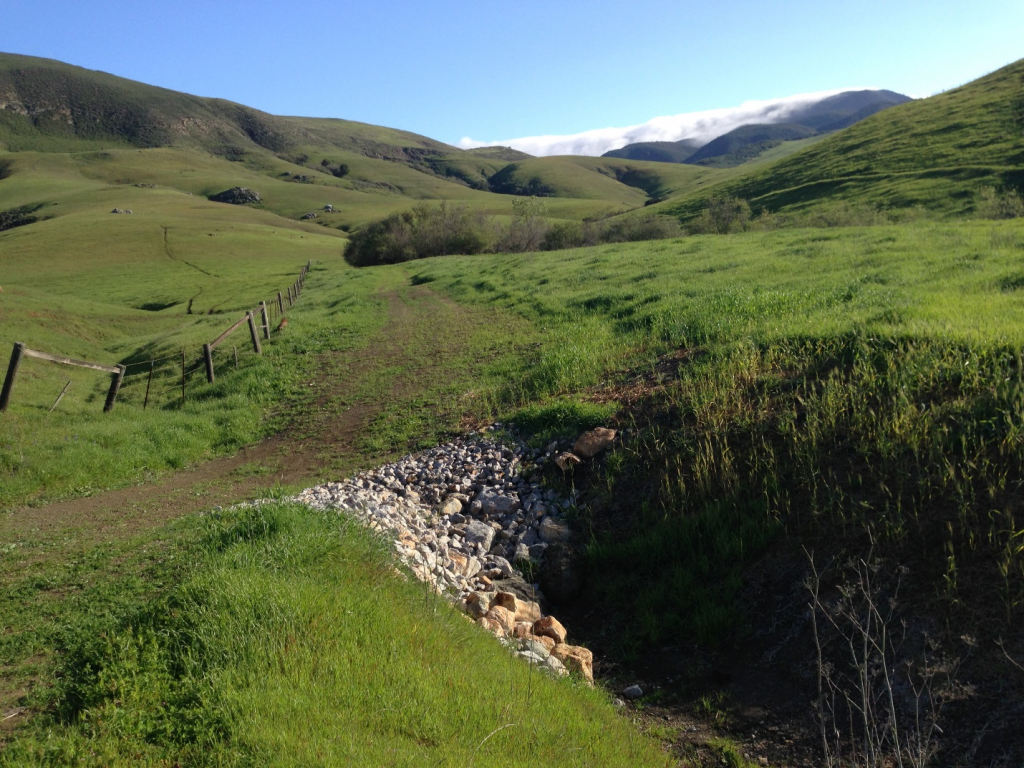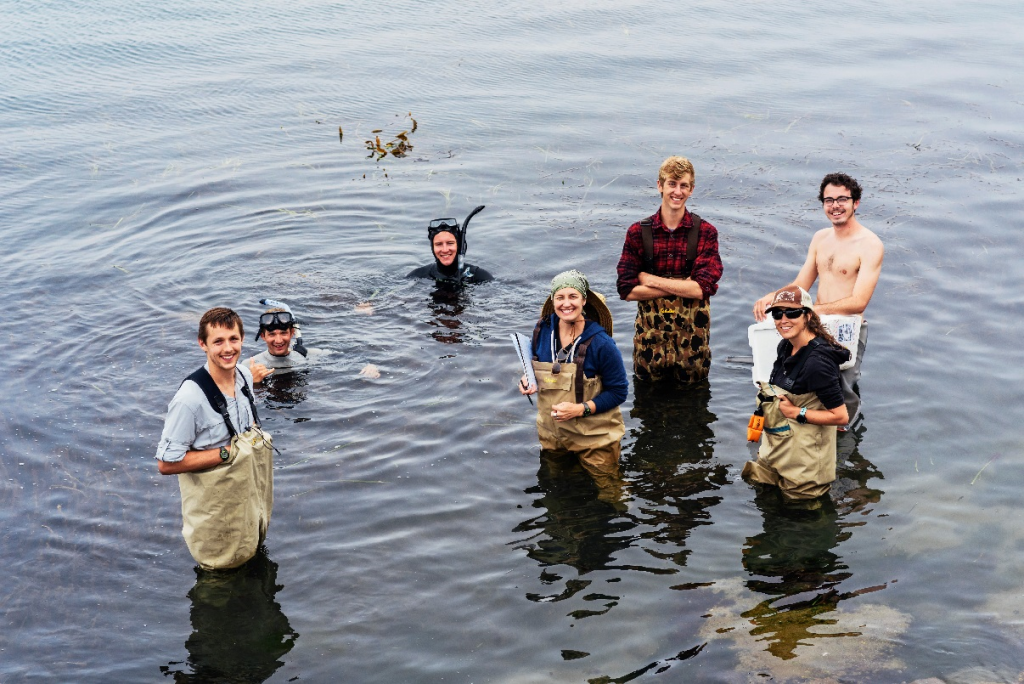Hello Friends,
Have you visited our office lately? Our work here at the Estuary Program has a lot of perks (paddleboarding for science, anyone?), but one of the most immediate is the simple pleasure of looking out our office window. The view of the bay is stunning and inspiring. Early one workday morning, we were treated to a show between a floating otter munching on breakfast and an interloping seagull looking to steal a tasty morsel.

In the summer, we watch schools of sailing students meandering by, fishing boats motoring back from the deep blue, and novice kayakers learning the strength of an outgoing tide. During the fall, we relish the retreat of the fog and enjoy sunnier days. Wintertime brings waves breaking on the harbor jetty, the sea foam visible over the sand dunes, and hundreds of winged migrants looking for a resting place. Spring winds create shifting sands on the dunes and spur on migrating whales, which sometimes visit the bay itself.

Our window onto the bay brings wonder to each day and motivates us. In 2016, this inspiration fueled the completion of our road-erosion prevention project. This project will keep 1,200 tons of sediment from reaching local creeks and the estuary each year for the next decade.

It also inspired our quest to better understand the loss of eelgrass in the bay and work to bring it back by supporting three Cal Poly research efforts. Our work does not happen without our dedicated partners and volunteers.

Cal Poly San Luis Obispo Professor Jenn Yost, her graduate students, and Morro Bay National Estuary Program staff took eelgrass samples for a genetics study that may help us better understand the cause of the eelgrass decline. Photograph by Tenney Rizzo.
The bay also inspires our community. Local photographers captured the textures of Morro Bay in this year’s photo contest, while poets pondered the beauty and diversity of our native wildlife.
In April of 2017, we look forward to having you join us for our State of the Bay month. Come learn how water quality, wildlife, and natural habitats are doing in and around the bay during a series of fun events. We will talk at Science After Dark, toast the bay with spirits and celebration, and explore the estuary and watershed with an array of partners.
As always, you can join us on Facebook or Instagram, and visit us at our Nature Center or online. I look forward to hearing how the bay inspires you!
Subscribe to get the Estuary Program’s blog delivered to your inbox each week!
Donate to help the Estuary Program protect and restore Morro Bay.